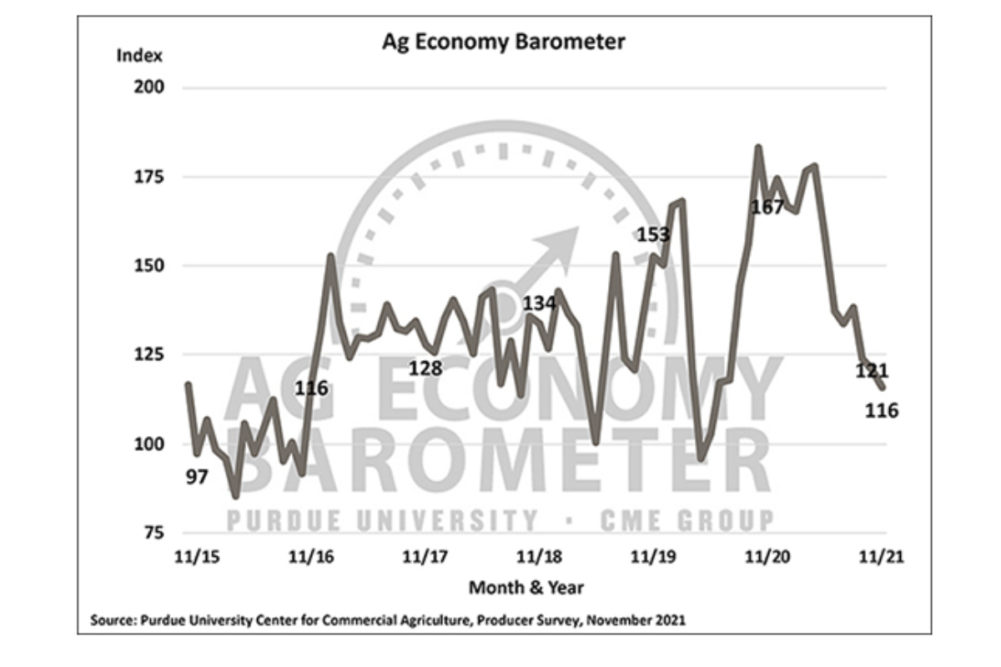WEST LAFAYETTE, INDIANA, US – The Purdue University/CME Group Ag Economy Barometer slipped 5 points in November to a reading of 116 as producers continue to be pessimistic about both the current and future outlook of the agricultural economy.
The Index of Current Conditions declined 7 points in November to a reading of 128 and the Index of Future Expectations fell 4 points to 110. November marked the lowest reading of 2021 for all three measures of producer sentiment and comparing year-over-year, the barometer is 30% lower than in November 2020.
The Ag Economy Barometer is calculated each month from 400 US agricultural producers’ responses to a telephone survey.
“Farmers are facing sharp rises in production costs coinciding with fluctuating crop and livestock prices, the prospect of changing environmental and tax policy, uncertainty over COVID-19, as well as a host of other issues, all of which are negatively impacting farmer sentiment,” said James Mintert, the barometer’s principal investigator and director of Purdue University’s Center for Commercial Agriculture.
Rising production costs, including those for fertilizer, farm machinery, seed and fuel, are of increasing concern to farmers. For example, in November 43% of survey respondents said they expect farm input prices to rise by more than 16% in the upcoming year. This compares with the actual average rate of farm input price inflation over the past decade of less than 2%.
Supply chain problems could be responsible for a drop in the Farm Capital Investment Index. The index declined 7 points to a reading of 39, the lowest reading since April 2020. In November, 44% of producers said their farm machinery purchase plans were impacted by low farm machinery inventories. When asked what their biggest concerns are for their farming operation in the upcoming year, nearly half (47%) of survey respondents chose higher input costs.
Unlike the broader sentiment measures, the Farm Financial Performance Index rose 2 points to 106 in November, 10% above its low reading in June 2021.
“Compared to late spring, strong crop yields for fall harvested crops and strength in wheat prices helped push 2021 crop revenue and profitability estimates up, compared to one year ago,” Mintert said.
Producers remain optimistic about farmland values over both the next 12 months and the next five years, as both the short-term and long-term farmland value expectations indices remain near their peaks.
“Strong cash flows from crops in 2021, low interest rates and, possibly, rising concerns about inflation continue to propel farmland values higher,” Mintert said.
Concerns over governmental policy and regulations remain elevated among farmers as 82% of respondents said they expect more restrictive environmental regulations, 74% expect higher estate taxes, and 77% expect higher income taxes in the years ahead. These percentages compare to results from the October 2020 survey when just 41% of producers expected more restrictive environmental regulations and 35% expected higher estate taxes over the next five years.
Read the full report at https://purdue.ag/agbarometer.





